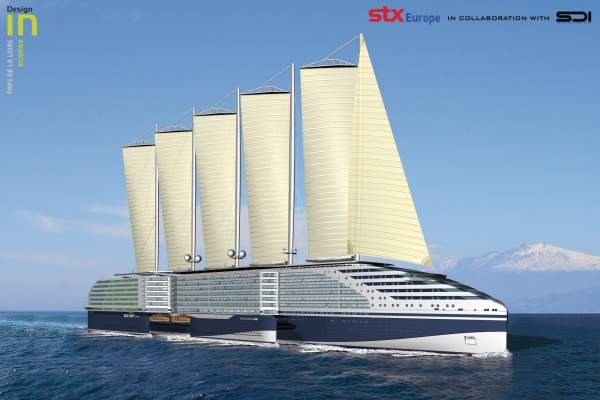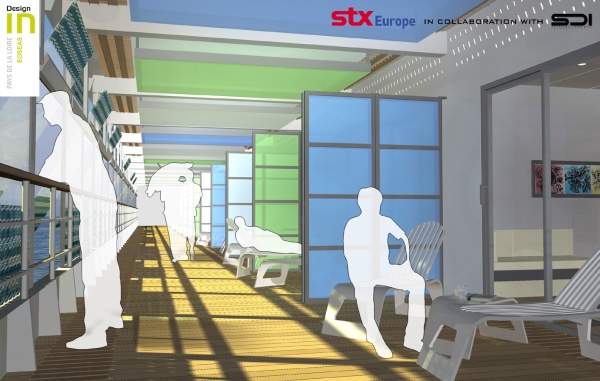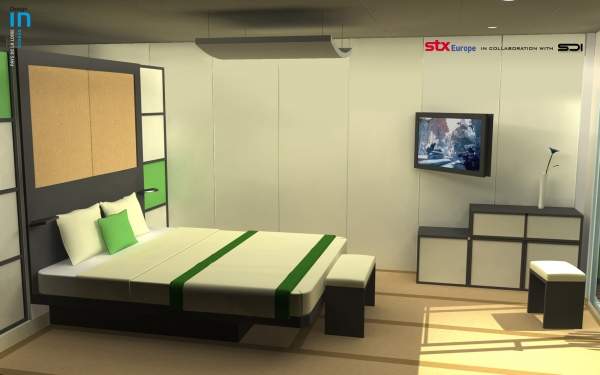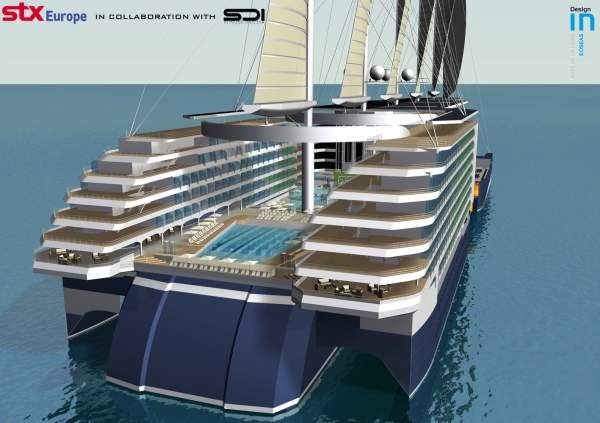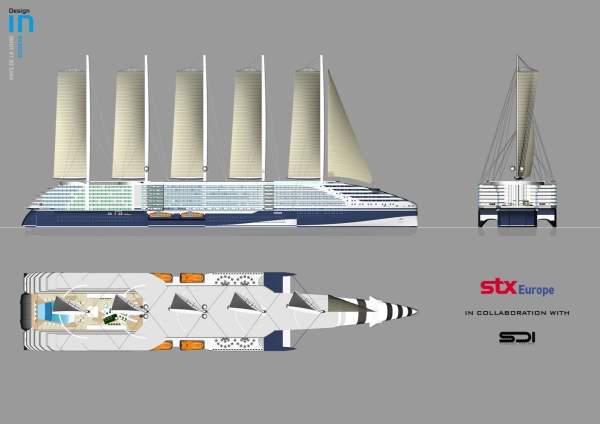Eoseas is a concept cruise ship being developed by STX Europe in collaboration with Stirling Design International (SDI).
The 105,000t ship will have an overall length of 305m, breadth of 60m and draft of 8m. Eoseas is being developed as a part of the Ecorizon programme launched by STX France in 2007.
STX’s Ecorizon programme
Ecorizon is a technical programme aimed at developing innovative marine clean technologies and alternatives to oil fuels. The project attained maturity in 2009 after two years of research and development work.
Jointly funded by STX Europe and the Regional Council, Ecorizon consists of five major work programmes including energy management, air emission management, water management, waste management and sustainable design.
Ecorizon addresses the entire environmental footprint of the ship throughout the design, construction and operation stages. The long-term goal of the concept is to reduce the use of non-sustainable energy to 50% by 2015.
Eoseas design and features
Eoseas incorporates a pentamaran hull design. The double hull design will feature long promenade decks on both sides of the ship.
The ship will be a trimaran on five hulls, of which two hulls on either side will have the same fore-and-aft plane. An air cushion under the main hull optimises the hydrodynamic characteristics of the vessel.
The double skin on the ship will function as a natural air conditioning system. The frictional resistance of the ship is reduced with the air film injection and the froude number is reduced by incorporating vertical bow.
Fresh water is generated onboard using highly efficient multistage evaporators and reverse osmosis. The ship will feature an advanced wastewater purification system to treat grey and black waters. An absorption chiller absorbs rain water from the upper decks. It uses heat generated from engines.
The design objectives of the Eoseas are to reduce power consumption by 50%, emissions of CO2 by 50%, SO2 by 100%, NOX by 90% and ash by 100%.
Accommodation onboard the concept cruise ship
Eoseas can accommodate 3,311 passengers in 1,403 cabins. There are 555 cabins for 1,089 crew members. The ship allows the passengers to fully explore the maritime environment. The passenger space ratio of the ship will be 31.7 when full and 37.4 based on lower berths occupancy.
The cabins are designed to use natural lighting and are fitted with presence sensors and light sensors. The energy management systems in the cabins reduce energy consumption by 30%.
Propulsion and power
Eoseas will be powered by four dual-fuel LNG diesel electric generator sets. Each genset provides 8MW power for propulsion and hotel load. There are four screws, two pump propellers with shaft lines on the outriggers and two pump propeller pods on the central hull.
LNG is stored in a storage system similar to that of LNG carriers and is transferred in a pressurised service tank. The ship will have an advanced heat recovery plant to recover thermal energy.
8,300m² photovoltaic panels fixed on side and upper deck provide maximum power of 108MW and an average of 270kWe. The organic waste gasification plant onboard generates 300kWe syn gas which is used in the generator sets.
The ship is equipped with an innovative sail concept patented by STX France. The sails mounted on five masts over 12,440m² significantly use wind energy for propulsion.
STX France conducted 13 tank tests with different hulls and propulsion configurations during 2008 and 2009, achieving 17% improvements over conventional propulsion / hull systems.
The innovative propulsion system aboard the ship enhances fuel efficiency, redundancy and manoeuvring.

